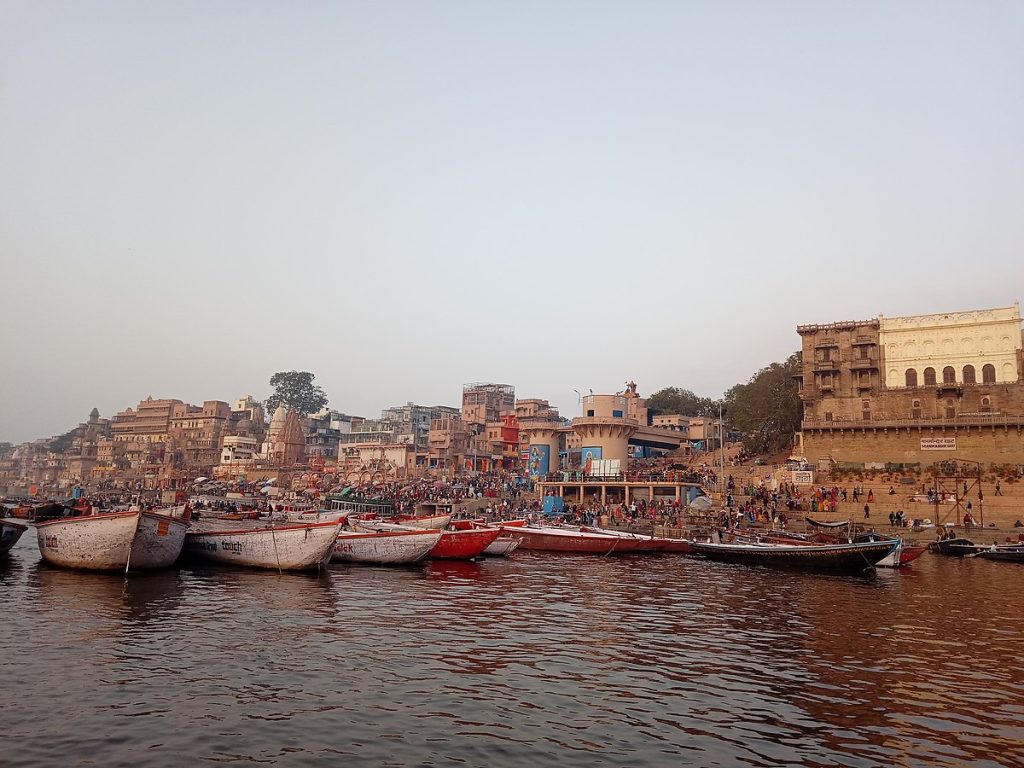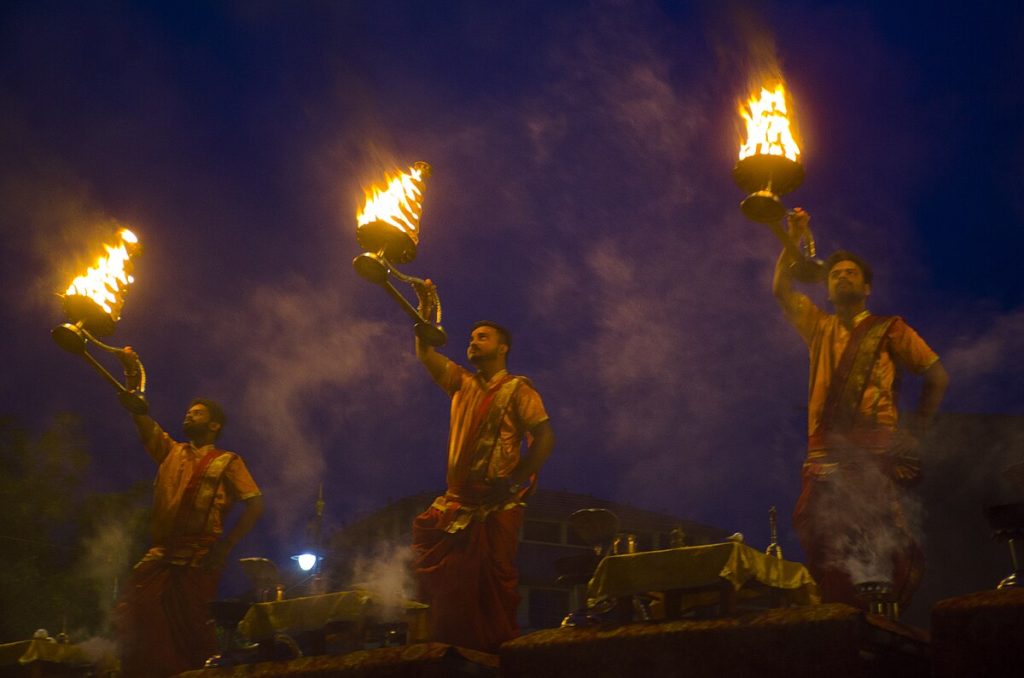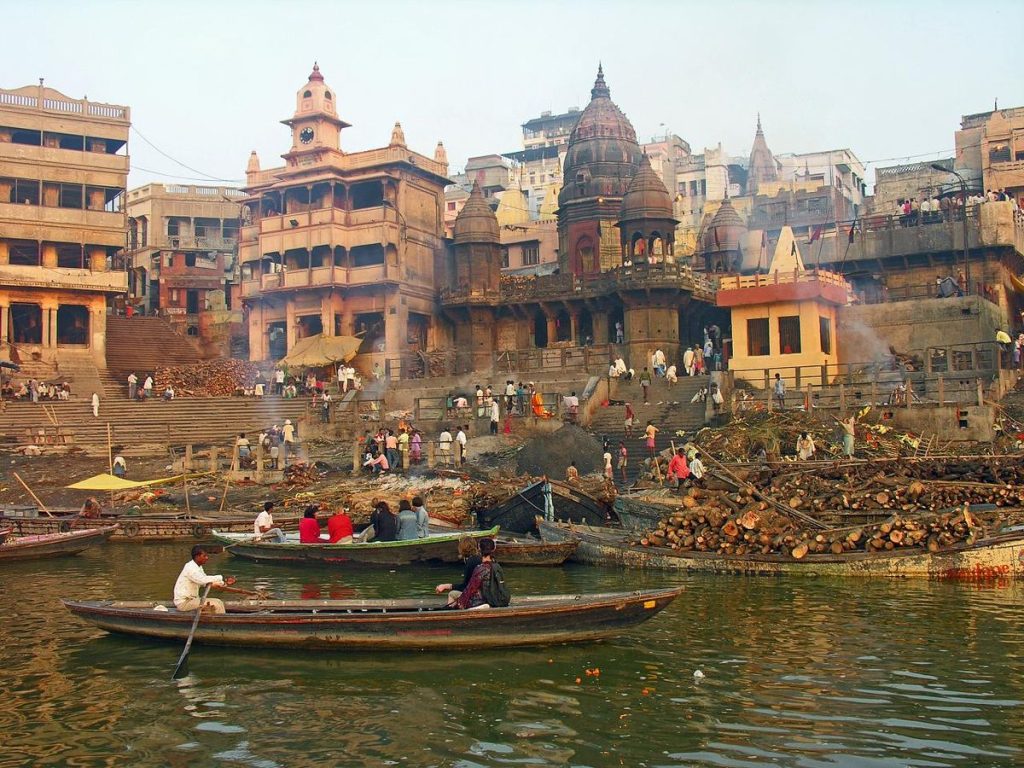The holy city of Varanasi sits on the banks of the sacred Ganges River, its waterfront dominated by a seemingly endless stretch of stone steps known as ghats. These 84 ghats along the Ganges form the lifeblood of Varanasi, serving as centers of spirituality, rituals, culture and daily activity for locals and pilgrims. Exploring the ghats offers profound insights into the essence of Varanasi. Each ghat has its own personality, stories and significance that unveil as you stroll the riverfront. Join me on a journey navigating the captivating maze of Varanasi’s 84 ghats. Discover how their collective heritage along the holiest of rivers creates an enchanting embrace.
Ghats are an integral part of Varanasi’s identity, with origins dating back thousands of years. Broad stone staircases leading down to the Ganges, ghats provide access to the sacred water for bathing, prayer, cremation rituals and more. Generations of locals start their day by descending ghat steps for a holy dip in the river. The ghats bustle with faithful followers lighting incense, offering flowers, meditating and chanting mantras in reverence of the Ganges. Exploring the ghats offers an authentic immersion into the spiritual essence of Varanasi.
84 Ghats: Exploring Dashashwamedh

Among the most renowned is Dashashwamedh Ghat, one of the oldest and liveliest. Priests continuously perform the Ganga Aarti ceremony with incense, lamps and prayers. Watching the nightly ritual draw hundreds is mesmerizing. You can also launch a boat ride, browse market stalls, and observe local life at this popular hub. In contrast, Manikarnika Ghat serves as the primary cremation site in Varanasi. Witnessing traditional cremation ceremonies grants perspective on the city’s intimate ties to death and rebirth.
Assi Ghat

Assi Ghat exudes a peaceful ambience. Pilgrims bathe before heading to Shiva temples nearby. In the evenings, cultural performances and music fill the air as locals gather on the steps. Lesser-known ghats like Chausatti Ghat and Narad Ghat see fewer crowds, allowing moments of tranquil contemplation with locals washing clothes or performing ablutions. Exploring these hidden corners underscores how integral the ghats are to Varanasi’s social and cultural fabric.
A boat ride along the ghats offers an unparalleled vantage point of the activities and architecture along the waterfront. Small wooden rowboats take you past palatial old buildings, ancient ashrams, and minor ghats where kids splash, and women wash dishes. Starting at sunrise lets you witness the ghats slowly awaken with hues of gold. Sunset rides shimmer with pilgrims lighting diyas along the steps. Professional boatmen adeptly navigate past river traffic, providing close-up views of ghat details.
Manikarnika Ghat and Harishchandra Ghat

Daily rituals and ceremonies unfold constantly across the ghats, imbuing Varanasi with a timeless aura. At Manikarnika Ghat and Harishchandra Ghat, families gather to cremate loved ones, their laments rising into the skies along with ashes. The clicking of cameras ceases out of respect. At Tulsi Ghat, pandits chant and mark devotees’ foreheads during puja. Ablaze with diyas during Diwali or strewn with marigolds on certain holy days, the mood of each ghat shifts like the river’s flows.
Northern Ghats
Weaving through the ghats reveals remnants of Varanasi’s rich history and cultural diversity. Northern ghats contain magnificent fort-like palaces built by maharajas overlooking the river. Deities in ornate temples receive offerings at all hours. Ashrams run by different akharas guard Varanasi’s spiritual traditions. Glean deeper insight into this heritage through knowledgeable guides versed in local history and customs. Tread respectfully, speak softly and let the energy of the ghats wash over you.
Tips to Navigate the 84 Ghats
Navigating the undulating ghats requires comfortable footwear, sun protection and conservative clothing that covers shoulders and legs out of respect. Arrive early to avoid crowds during ceremonies. Be mindful of rituals happening on ghat steps and refrain from intrusive photography. Support local communities by purchasing flowers or diyas to offer to the Ganges. Allow ample time to immerse yourself in each ghat’s spiritual aura. Soon their mystique carries you into timeless realms.
With 84 ghats weaving their way along the river, navigating Varanasi’s waterfront can feel daunting. But let the river be your guide. Here are some whispers to help you create your own journey:
- Sunrise at Dashashwamedh: Witness the city come alive with the aarti ceremony.
- Morning boat ride from Assi Ghat: Float on the Ganges, soaking in the panoramic view.
- Yoga at Man Mandir Ghat: Breathe in the serenity while overlooking the water.
- Evening stroll from Harishchandra Ghat to Kedar Ghat: Experience the changing moods of the river.
- Street food near Beni Madhav Ghat: Treat your taste buds to local delicacies.
- Ganges boat tour: Explore the lesser-known ghats and witness traditional bathing rituals.
- Visit Kashi Vishwanath Temple: Seek blessings at the holiest Hindu temple in Varanasi.
- Evening cultural show: Immerse yourself in the vibrant music and dance of Banaras.
Ganges’ Embrace: More Than Just a Journey
Gliding over the Ganges past the 84 ghats, each reveals its own stories, customs, and place in Varanasi’s cosmic jigsaw. Gazing at the crumbling stone steps, ancient palaces, bathing pilgrims, and flickering diyas, one comprehends how the sacred waterway binds everything in its omnipresent flow. The ghats form the arteries through which Varanasi’s spiritual heart beats, pumping lifeblood into all who come seeking Ganga’s blessings. Lose yourself in their meditative embrace, for they provide the true entrance to Varanasi’s soul.
As the Vedic saying goes, “For the Ganga, Varanasi is the place, and for Varanasi the Ganga is the essence.” Nowhere is the truth of this more evident than along the enduring ghats etched into Varanasi’s riverfront. Once touched by their grace, the spirit of Varanasi forever dwells within you.
